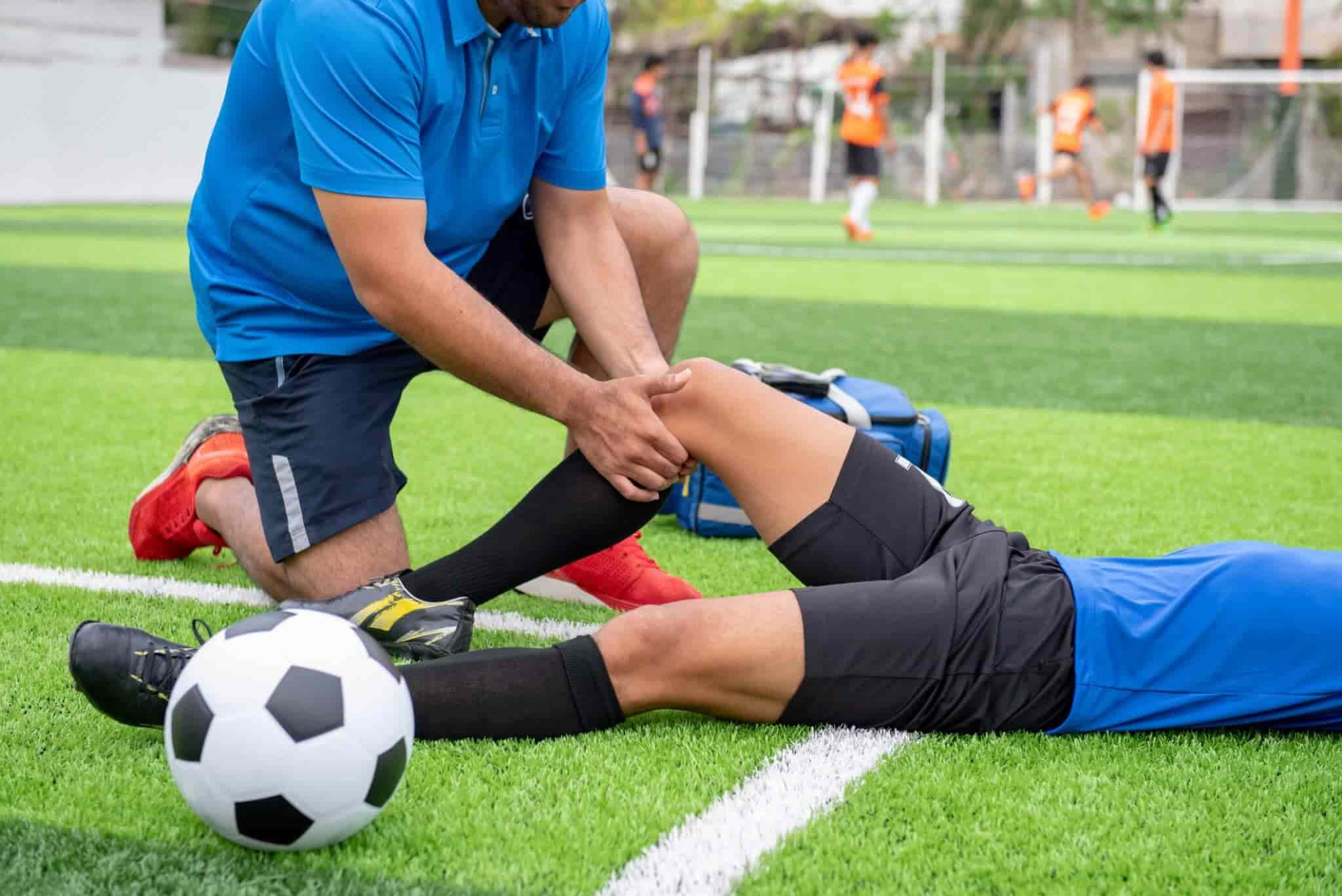
Soccer is the most widely played team sport in the world, and is quickly growing in the U.S. As more kids and adults start to play the sport, soccer-related injuries will likely increase.
What Are the Most Common Soccer Injuries?
The most common soccer injuries are to the lower extremities such as strains and sprains around the knee or ankle. Other injuries that occur while playing soccer include:
- Overuse injuries: The most frequent soccer overuse injuries are shin splints, Achilles tendinitis (pain at the back of the ankle) and pain in the knee.
- Stress fractures: These occur when a bone becomes weak due to excessive use.
- Upper extremity injuries: Shoulder dislocations, wrist sprains and fractures happen due to a fall on a stretched arm or from contact with another player.
- Head injuries: Common injuries to the head and face during soccer include concussions, neck sprains, face cuts and fractures.
How Can You Prevent Injuries in Soccer?
You can use different strategies to improve soccer safety and prevent injuries, from proper physical examination to the use of proper equipment and paying attention to field conditions. Here are a few tips:
- Prepare properly for play: Stay fit and ensure you’re in great physical condition before the playing season starts. Do exercises that improve strength and flexibility. Always warm up by stretching and running before a game, since cold muscles increase the risk of injury. Also, make sure to hydrate so your body can cool itself effectively.
- Use the right equipment: Wear shin guards to protect your calf and lower legs, and play with soccer shoes that have molded cleats on dry fields. Use synthetic nonabsorbent balls, especially when the field is wet.
- Maintain a safe environment: The goal post should be properly padded and secured to prevent head injuries from collisions. Keep the goals secure to prevent them from falling. Avoid playing on a very wet field or playing in intense hot weather. If necessary, take frequent water breaks during the game.
- Prevent overuse injuries: Parents can reduce injuries by reducing the number of contact sports that a child plays during a single season. Let your child explore other extracurricular activities to improve skill development and reduce the risk of overuse injuries.
How to Prevent Concussions in Soccer
Concussions occur mainly due to head-to-head collisions between players. The best way to prevent concussions is to be conscious of dangerous situations, such as:
- Struggling for the ball in the penalty area
- Playing in small fields
- Playing rough without observing rules of fair play
- Contending for overhead shots during corner kicks and other set pieces
Learn More About Soccer Injury Prevention and Treatment
If you need additional information on how to prevent soccer-related injuries, call OrthoBethesda today. You can speak to our highly skilled orthopedic surgeons who are experts in sports medicine. We’re eagerly waiting to answer all your questions and help you treat any sports injury with the most effective treatment methods.
Related Content
- What Is a Sports Medicine Physician?
- Why College & High School Athletes Need Sports Medicine
- How to Prevent Concussions for Every High-Impact Sport
- How to Prevent Dance-Related Injuries
- Best Sports to Play If You’re Suffering From Osteoarthritis
- Guide to Preventing Running Injuries
- How to Prevent Sports Injuries
- Most Common Sports Injuries
- 4 Common Injuries Swimmers Should Be Aware Of
